One of my favorite Sierra junipers doesn’t fit neatly into any categories. It’s form is somewhere between informal upright and semi-cascade. The base of the trunk is massive, but the apical foliage extends from a slender, twisting branch. I can’t say I’ve figured the tree out, but I enjoy trying.
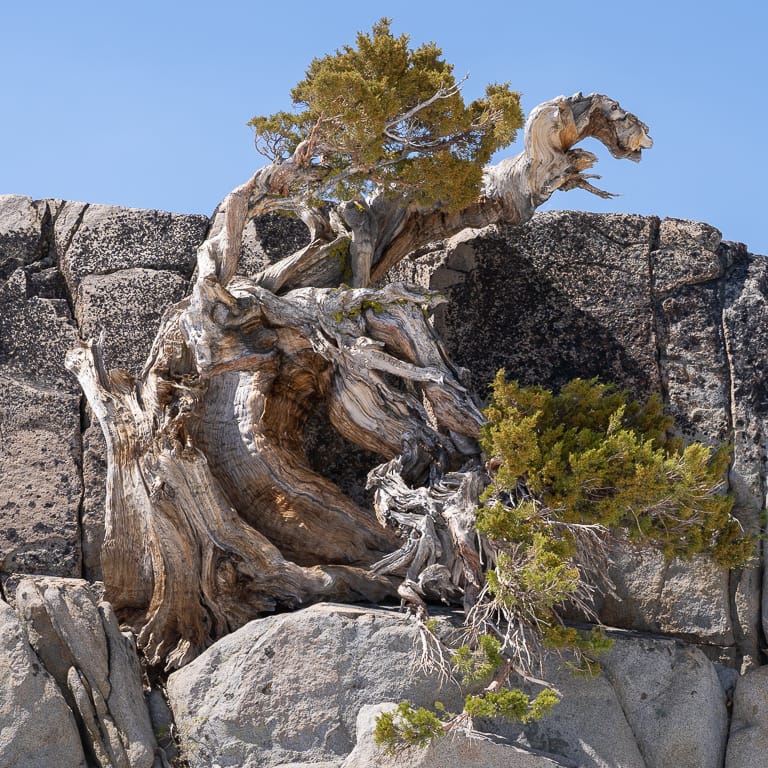
Ancient Sierra juniper
The tree sits at timberline, almost 9,000 feet above sea level, a short walk from Meiss Meadows and the Carson Pass Information Station. Slightly protected by the rock from which it grows, the tree reveals the easterly prevailing winds that give it its shape.
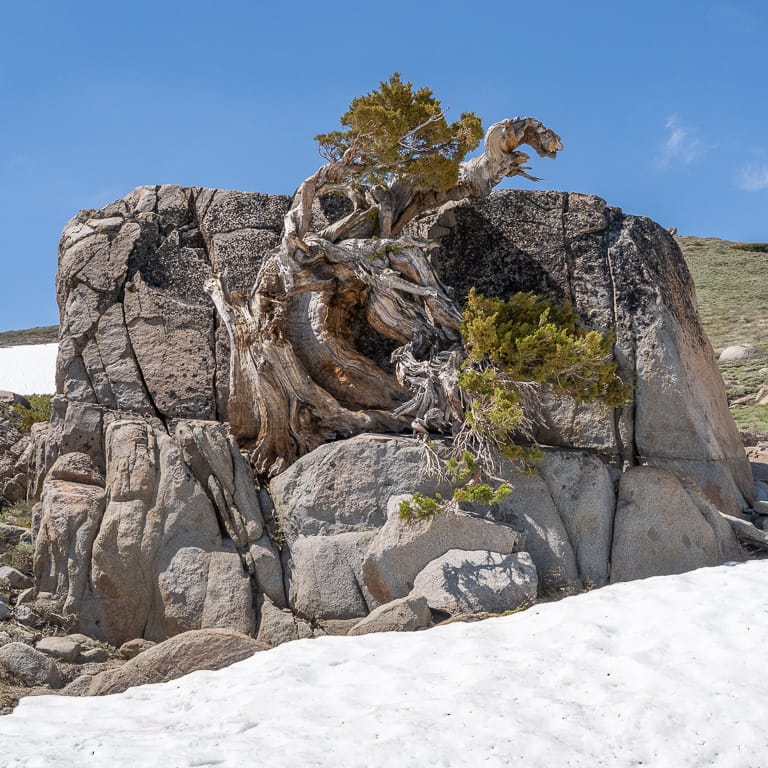
Growing out of the granite
The tree’s key features are its unique deadwood formations. The topmost dead branch makes me wonder what the tree looked like when the branch was still alive.
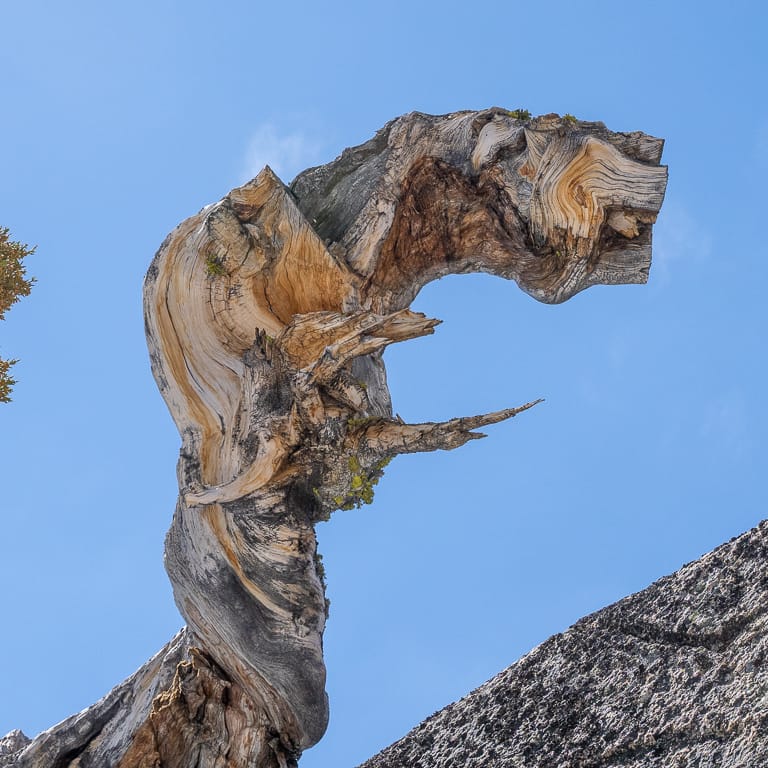
Dead branch
Along the trunk, a slender lifeline crosses a large expanse of deadwood along an improbable path.
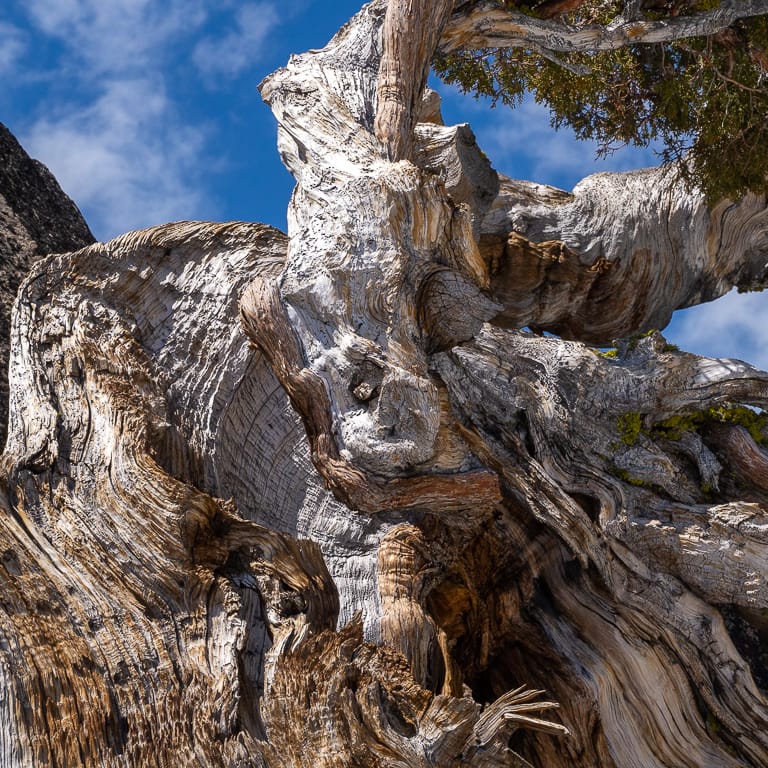
Slender lifeline
Just below this, more significant lifelines provide support to the cascading branches with contorted deadwood.
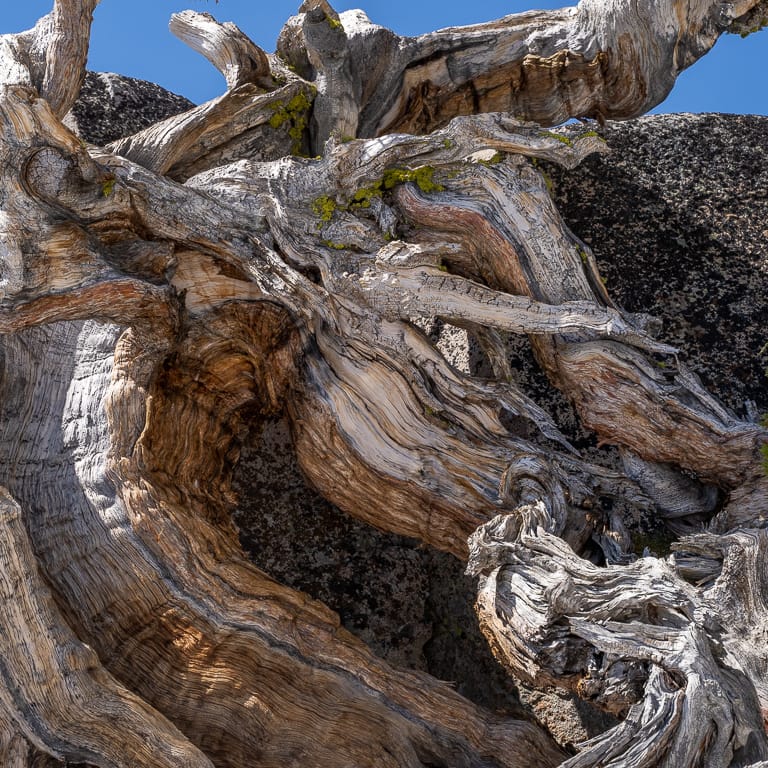
Cascading branches
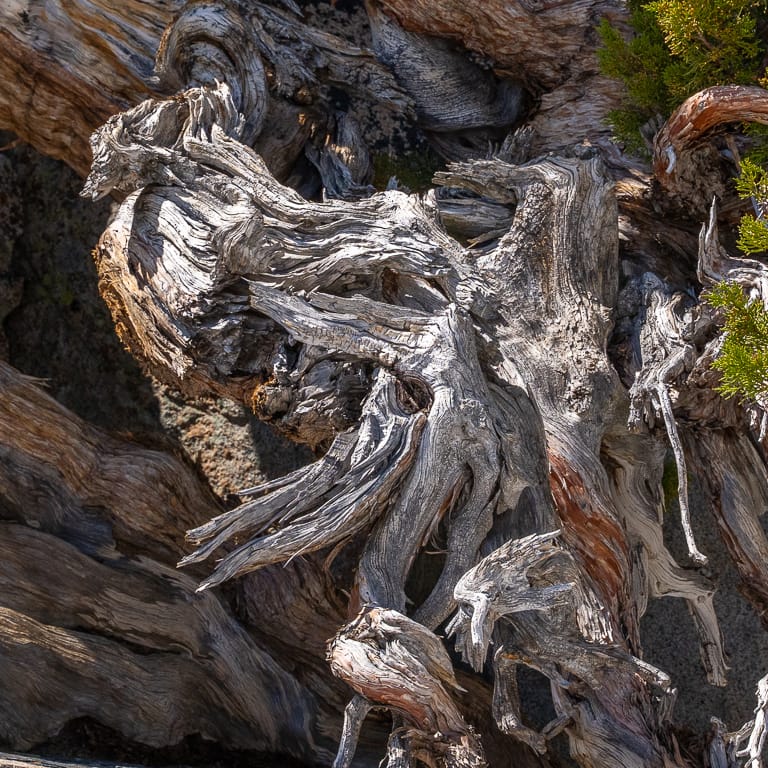
Contorted deadwood
When approaching the tree from the east, there’s much less to see. It’s from the south that the tree’s form is most easily appreciated.
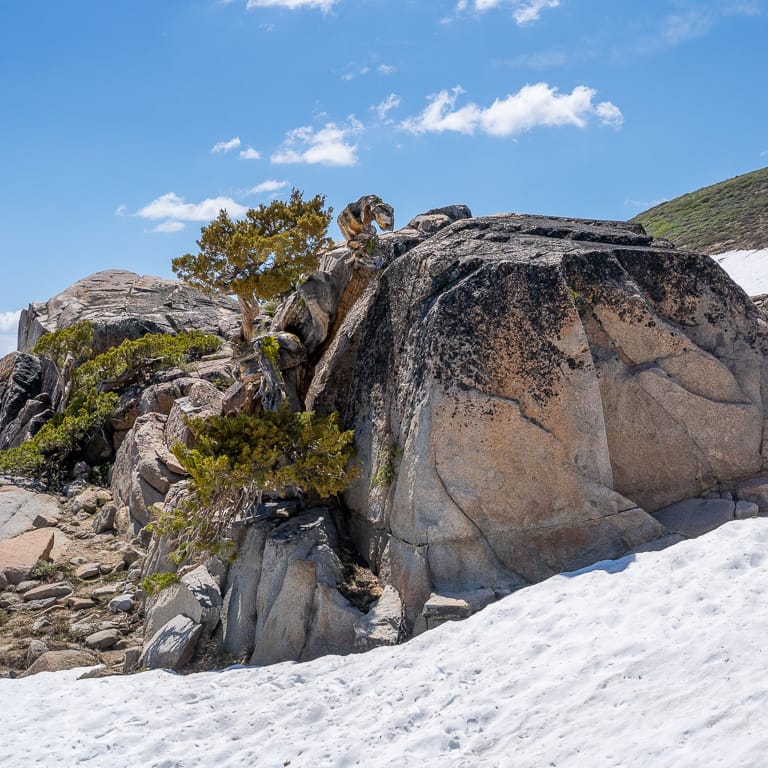
View from the east side of the tree
If you are curious about the tree’s size, here are Yoichi Fukuda and Hiroharu Kobayashi posing for scale.
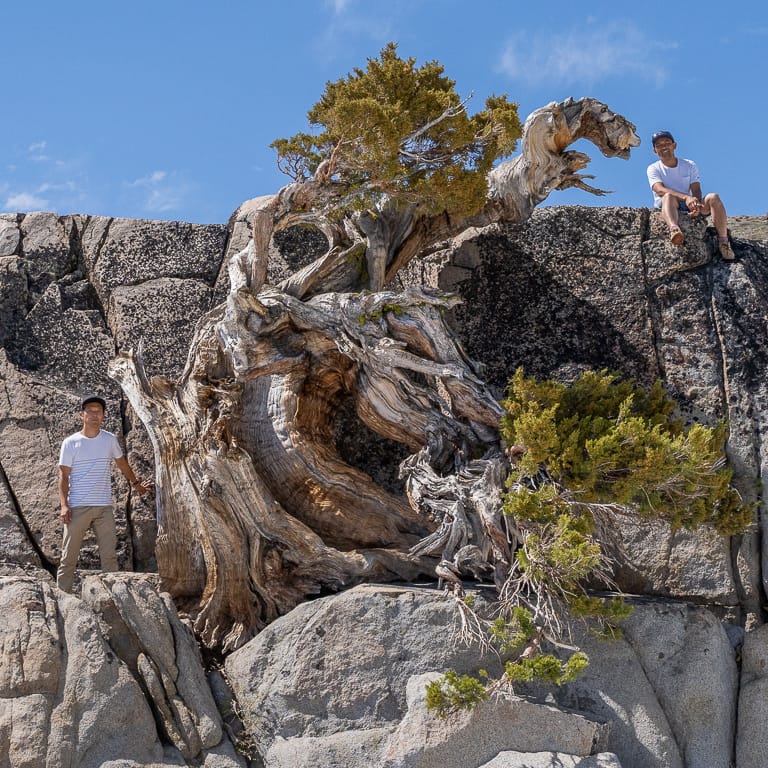
Yoichi and Hiroharu posing with the Sierra juniper
Next up, a natural semi-cascade Sierra juniper.
Subscribe to Bonsai Tonight
New Posts Delivered Every Tuesday and Friday
Edward Stanton says
Jonas, Magnificent and inspiring. Thank you.
Jonas Dupuich says
Thanks Ed!
Loren D Stirling says
Is there anyway to determine the age of this tree? It has to be over 300 years, I would think. For me, the sawed off branches conjures visions of early western travelers gathering firewood in passing. What are your thoughts?
Jonas Dupuich says
Good question Loren – I have no idea about the age. Large Sierras like the Bennett juniper have been estimated to be around 3000 years old so the junipers in this area could be fairly old.